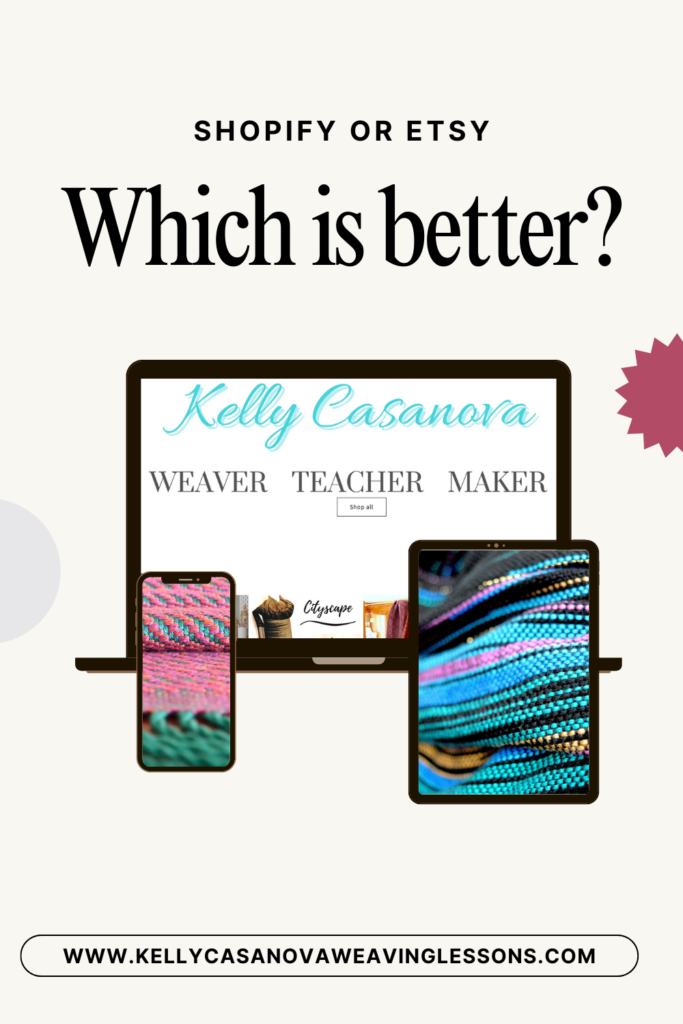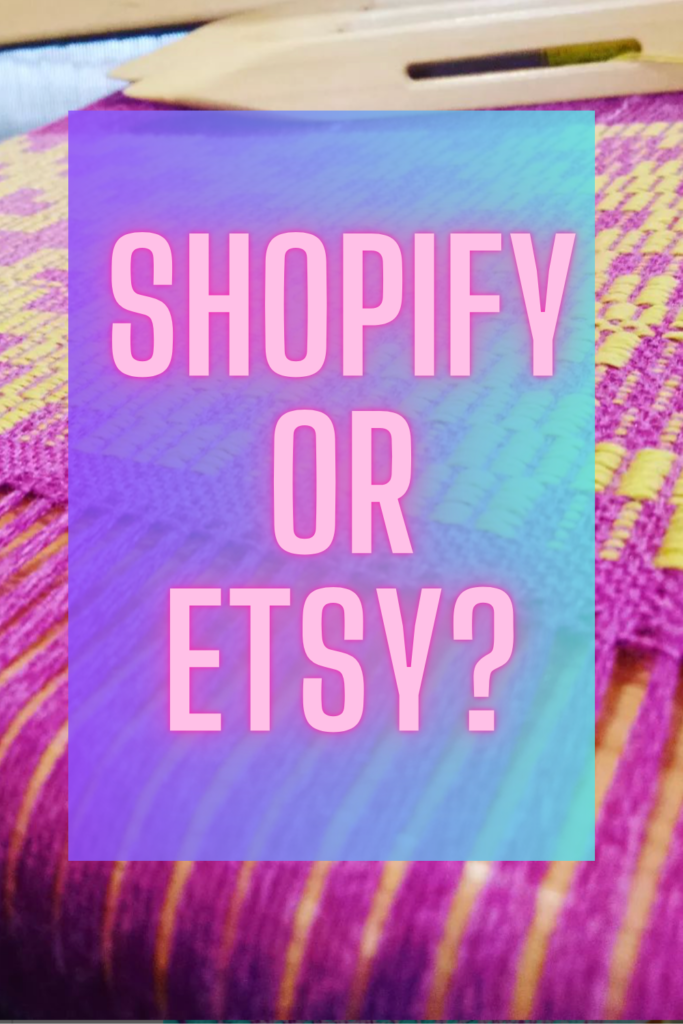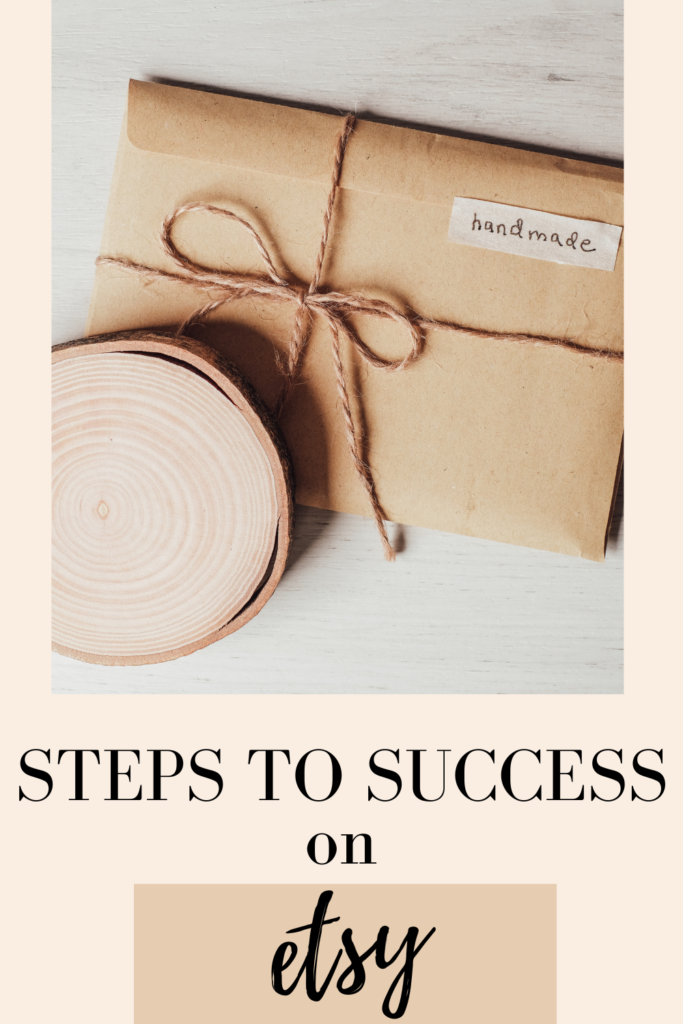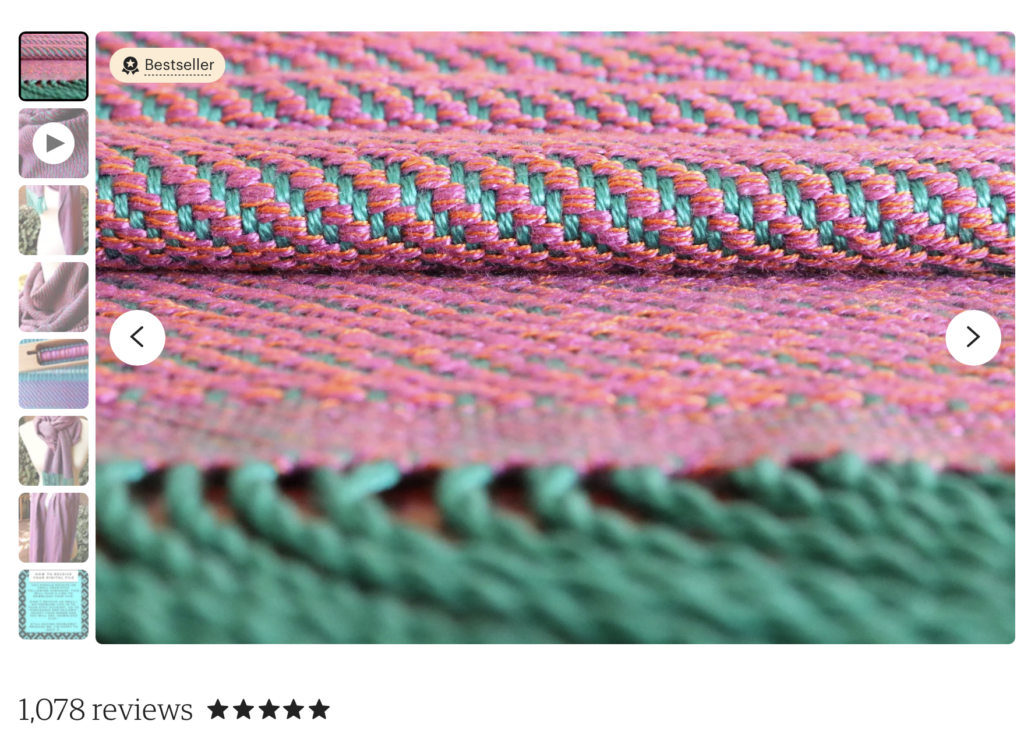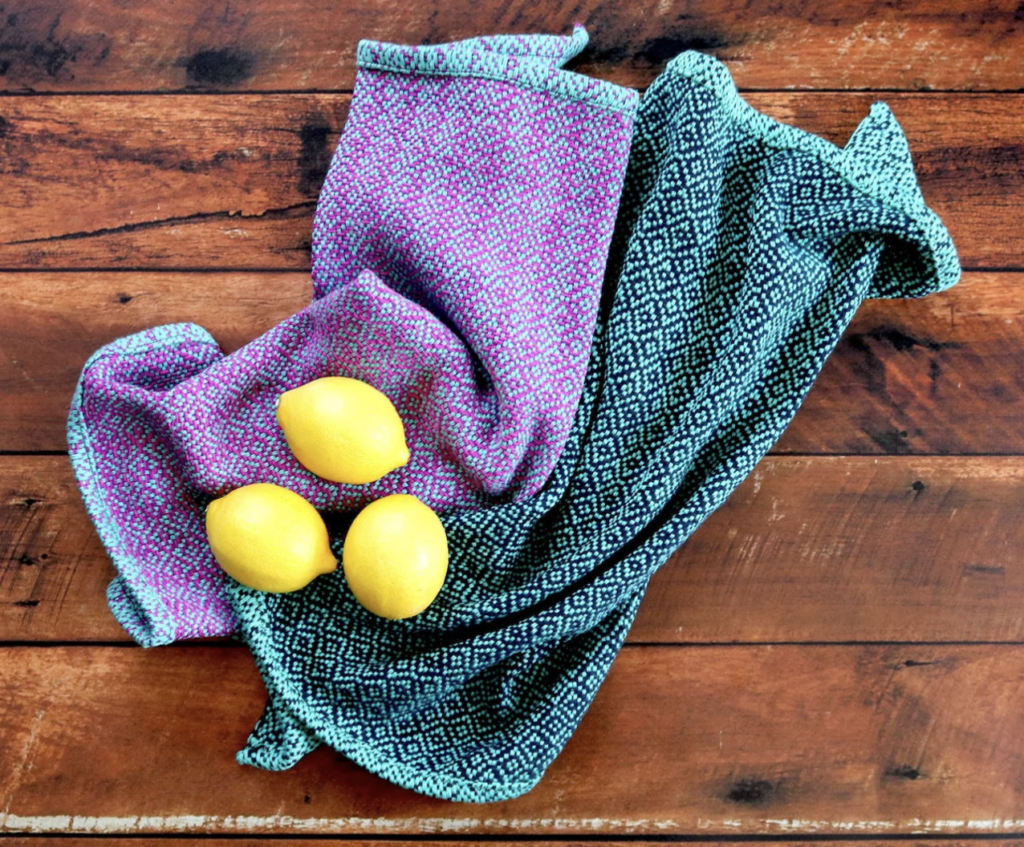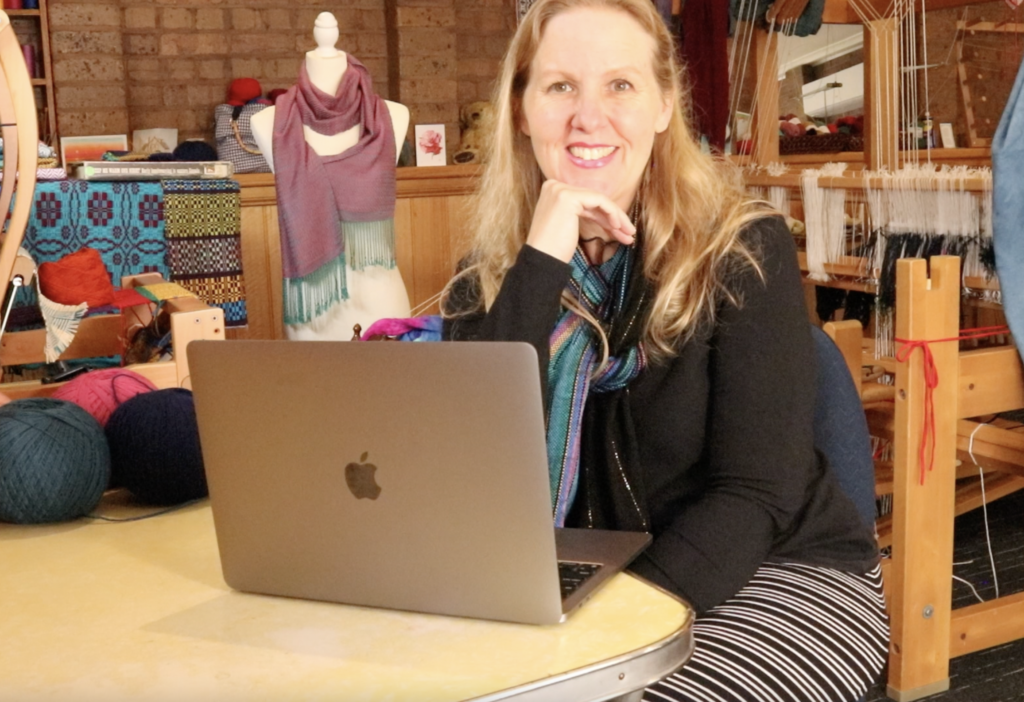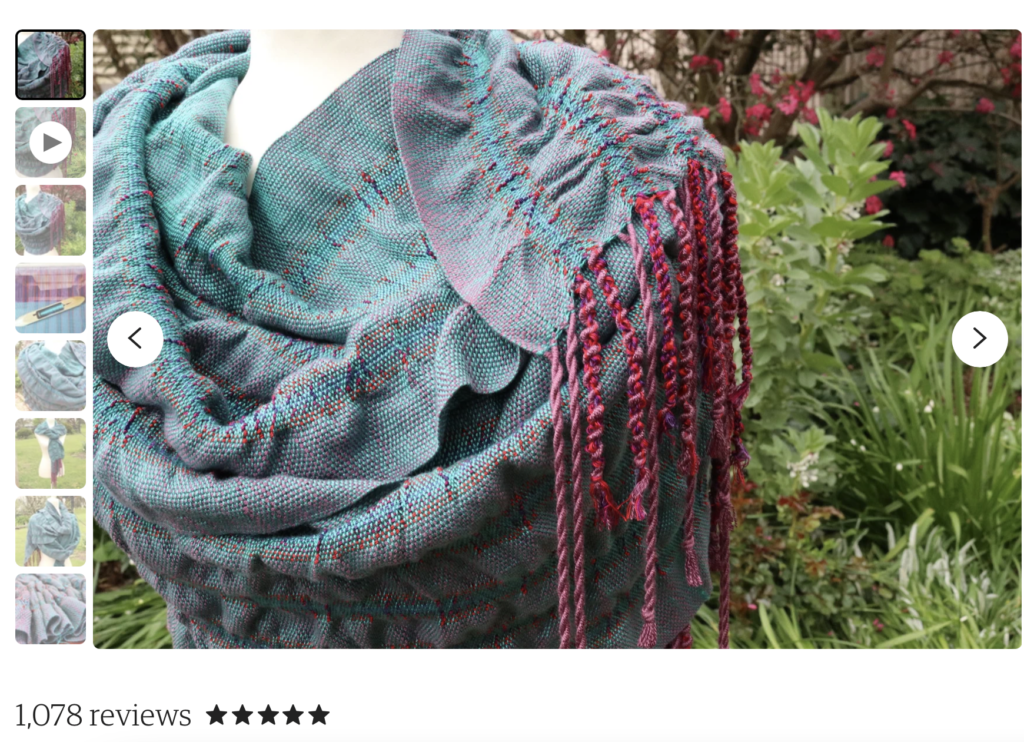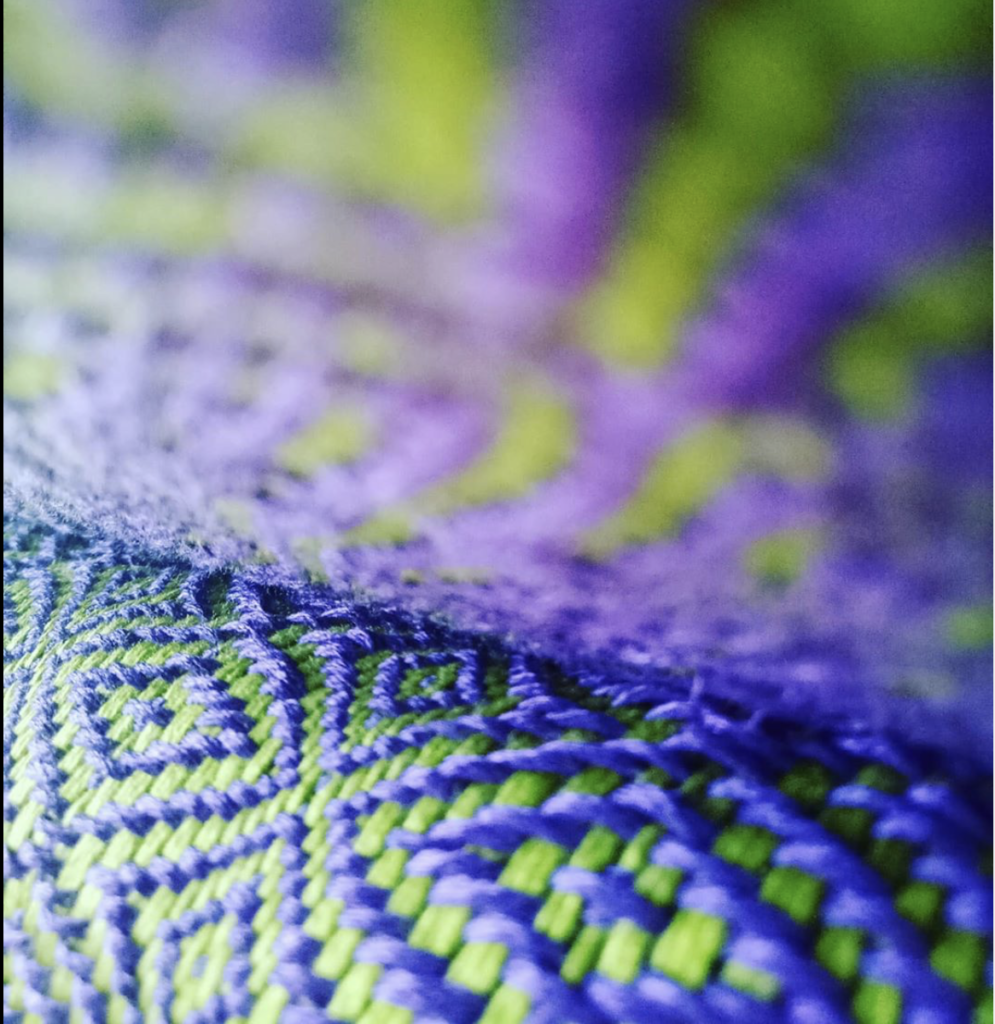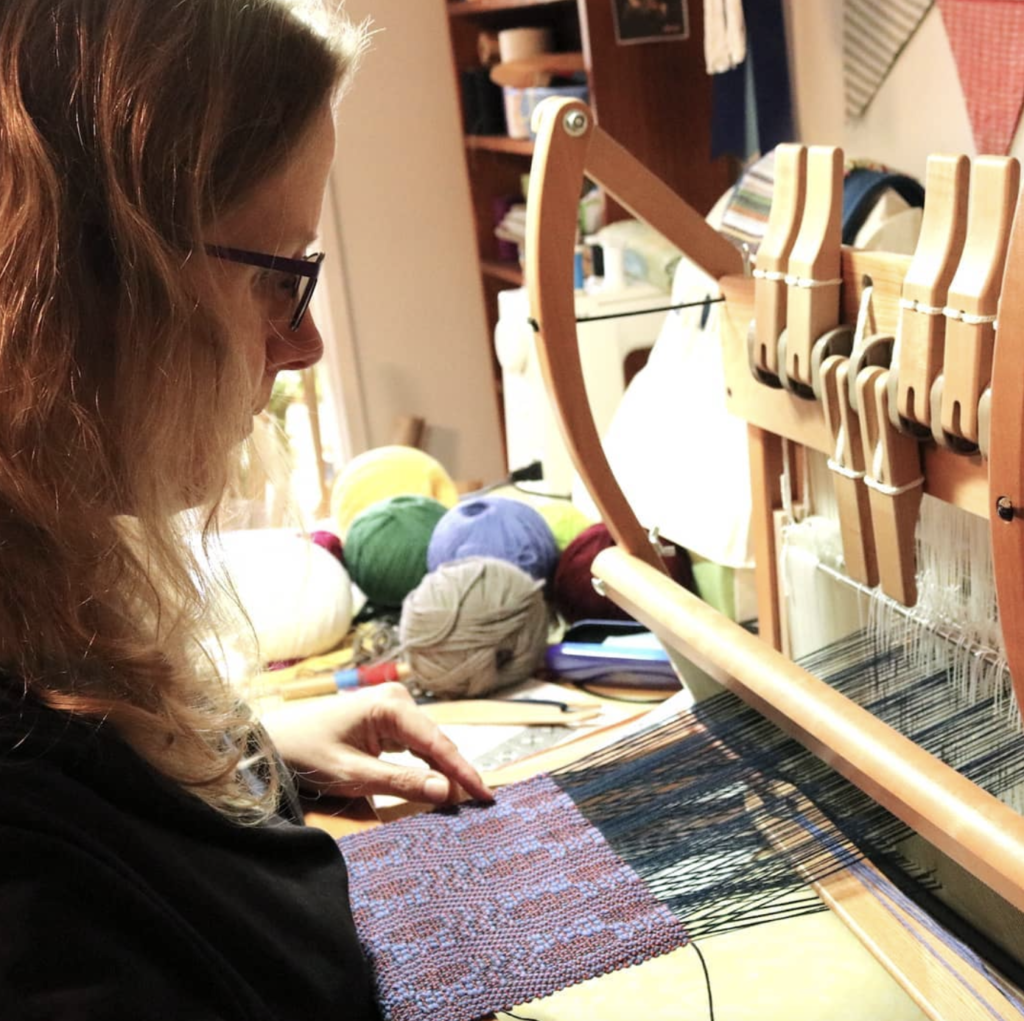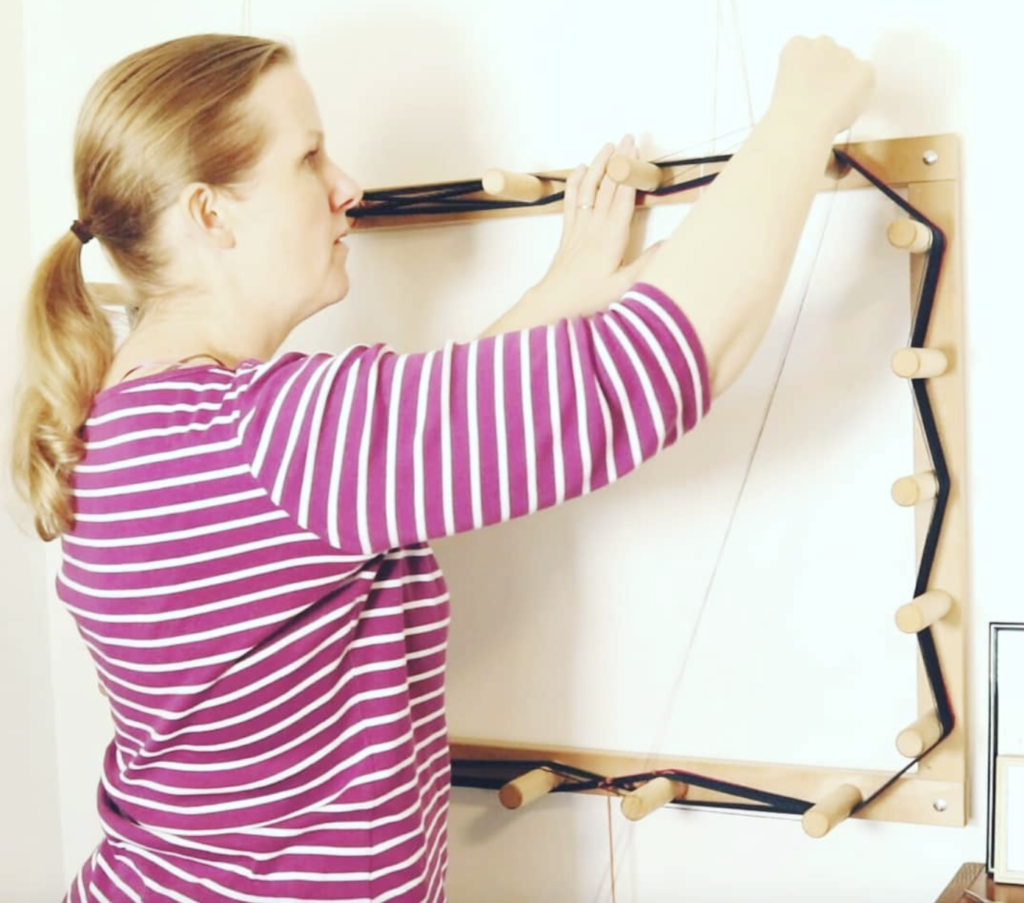Weaving is a rewarding craft, but did you know you can also turn it into a profitable business? Whether you’re a beginner or an experienced weaver, there’s a strong market for handwoven textiles, from scarves to home décor.
In this guide, I’ll walk you through seven profitable weaving projects that sell well online, at craft fairs, and in local shops. Plus, I’ll share tips on pricing, marketing, and where to sell your handmade woven goods.
If you’re looking for weaving projects that make money, you’re in the right place!
1. Handwoven Scarves (A Timeless Bestseller!
Why It Sells:
Handwoven scarves are a staple in the handmade market. They are stylish, functional, and appeal to a wide audience, making them one of the best weaving projects to sell.
Best Materials:
- Cotton or bamboo for lightweight, breathable scarves.
- Merino wool or alpaca for cozy, winter-friendly options.
- Hand-dyed or variegated yarns add a unique touch.
- Tencel, bamboo, cashmere and silk for luxury scarves.
Pricing Tip:
Handwoven scarves can range anywhere from $50–$500 online, depending on fiber quality and weave complexity.
Marketing Idea:
Create seasonal collections—lightweight scarves for spring/summer and wool blends for fall/winter.
👉 Where to Sell: Shopify, Etsy, Instagram, local craft fairs, fiber festivals.
2. Woven Wall Hangings (Trendy & High-Value)
Why It Sells:
The demand for woven wall art has skyrocketed, especially with the popularity of boho home décor. These pieces allow weavers to express creativity while attracting home décor enthusiasts who are looking to invest in some textile art.
Best Styles to Sell:
- Minimalist & neutral tones for a modern aesthetic.
- Bold, textured pieces featuring fringe and mixed fibers.
- Custom commissions for personalized home décor.
Pricing Tip:
Pricing varies based on size, but small pieces can start at $50, while larger custom wall hangings sell for $200+.
Marketing Idea:
Use Instagram Reels and Pinterest to show your weaving process—people love seeing handmade items in progress!
👉 Where to Sell: Shopify, Etsy, Instagram, interior design boutiques, online art markets.
3. Mug Rugs & Coasters (Small but Mighty!)
Why It Sells:
Mug rugs and woven coasters are perfect for customers looking for affordable, handmade gifts. They’re small, quick to make, and easy to ship, making them an excellent low-cost weaving project to sell.
Best Fibers:
- Cotton for durability and easy washing.
- Linen for a high-end, natural look.
Pricing Tip:
Sell single mug rugs for $10 – $15 or in sets of four for $40 – $50.
Marketing Idea:
Bundle your coasters with matching table runners or coffee gift sets for upselling.
👉 Where to Sell: Shopify, Etsy, gift shops, craft fairs, farmers’ markets.
4. Woven Tote Bags (Sustainable & Stylish)
Why It Sells:
Handwoven tote bags attract eco-conscious shoppers who love reusable, stylish bags. They are perfect for daily use, shopping, or even as beach bags.
Best Materials:
- Thick cotton or hemp for durability.
- Upcycled fabric strips for a unique, sustainable touch.
- Wool (felted or unfelted)
Pricing Tip:
Handwoven totes sell for $40–$120, depending on size and materials.
Marketing Idea:
Offer custom colors or styles to make your totes stand out.
👉 Where to Sell: Shopify, Etsy, local boutiques, zero-waste stores, farmers’ markets.
5. Table Runners & Placemats (Handwoven Home Décor)
Why It Sells:
Handwoven table runners and placemats elevate any dining space, making them popular as wedding gifts or holiday décor.
Best Fibers:
- Linen or cottolin for a classic, high-end look.
- Cotton blends for durability.
Pricing Tip:
Placemats sell well in sets ($50–$100), while table runners range from $60–$200.
Marketing Idea:
Create seasonal collections (holiday, spring, rustic farmhouse) for repeat customers.
👉 Where to Sell: Shopify, Etsy, home décor stores, artisan markets.
6. Baby Blankets & Heirloom Textiles (Cherished Keepsakes)
Why It Sells:
Parents love one-of-a-kind, handwoven baby blankets as sentimental gifts. Family heirlooms are also popular. Many families have either full or fragments of hand woven coverlet and blankets from the past to pass down through the generations!
Best Fibers:
- Organic cotton for breathability (very important for babies!)
- Soft wool or bamboo for warmth.
- A combination of cotton and wool, as you will often find in traditional overshot coverlets and blankets.
Pricing Tip:
Handwoven baby blankets range from $80 up to $300, depending on size and material.
Marketing Idea:
Offer personalized details for a higher price point.
👉 Where to Sell: Shopify, Etsy, baby boutiques, craft fairs.
7. Woven Keychains & Accessories (Perfect for Craft Fairs!)
Why It Sells:
Small, affordable, and easy to make in batches, woven keychains and mini accessories like small purses are great impulse buys.
Best Materials:
- Cotton, cottolin, tencel, bamboo for durability.
- Hand-dyed fibers for a unique touch.
Pricing Tip:
Handwoven keychains sell for $8–$20, making them great for bulk sales.
Marketing Idea:
Sell keychains as part of a bundle with other woven goods to increase order value.
👉 Where to Sell: Shopify, Craft fairs, Etsy, Instagram, gift shops.
How to Sell Your Woven Creations Successfully
- Know Your Costs:
- Factor in materials, time, and overhead. This is so important – you have to know that you’re actually able to make money to have a viable business.
- Know What The People Want:
- Sounds pretty common sense, right? Give potential customers what they’re looking for and you will make sales. We all love to make what we make, but is it going to sell?
- Sell in the Right Places: Shopify, Etsy, craft fairs, social media shops, or local boutiques. Don’t forget word of mouth and starting out by selling to family and friends too, this teaches valuable lessons!
- Use Social Media: Share your weaving process on Pinterest and Instagram to attract buyers.
Start Selling Your Weaving Projects Today!
If you’ve been wondering how to make money weaving, these seven projects are a great starting point! Experiment with styles, market your pieces well, and most importantly—enjoy the creative journey!
If now is the right time for you to get started selling your weaving, I have resources to help!
Selling Your Weaving (member’s only online class)
Which Platform is the Best for Online Selling?
Handmade Business Beginner Essentials
3 Ways to Start Selling Online for Free!
Until next time…
Happy Weaving!
👇 Save this on Pinterest! 📌





